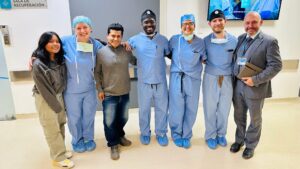As the demand for organ transplantation continues to rise, Donation after Circulatory Death (DCD) donors have emerged as a vital solution to expand the donor pool. However, these cases present significant challenges, including the risk of ischemic damage and subsequent organ dysfunction. To address these issues, normothermic regional perfusion (NRP) has been implemented, a technique that restores oxygenation and circulation in the donor’s organs after circulatory cessation. This article examines the potential benefits of integrating advanced monitoring of indexed oxygen delivery (DO2i), oxygen extraction ratio (O2ERi), and carbon dioxide production (VCO2) during NRP in DCD donors.
Oxygen delivery (DO2i) is fundamental in maintaining cellular metabolism and preventing ischemic damage during organ preservation. Studies, such as those by de Somer et al. (2011), demonstrate that inadequate DO2i levels are strongly associated with acute kidney injury (AKI), underscoring the importance of maintaining optimal oxygen delivery during procedures like cardiopulmonary bypass (CPB). During NRP, monitoring DO2i ensures that oxygenation meets the metabolic demands of donor organs, thus preserving their viability for transplantation.
The oxygen extraction ratio (O2ERi) provides a critical metric to balance the oxygen supplied to tissues against the oxygen they consume. This balance is essential to avoid under-oxygenation, which can lead to ischemic damage, and over-oxygenation, which risks oxidative stress and tissue damage. Incorporating O2ERi into NRP monitoring provides clinicians with insights into the precise oxygenation needs of the organs. When combined with DO2i, O2ERi allows for real-time adjustments to maintain the optimal oxygenation balance and organ viability.
Carbon dioxide production (VCO2) is another crucial parameter in evaluating the metabolic state of donor organs. A disproportionate increase in VCO2 relative to oxygen delivery can signal metabolic distress, prompting timely interventions to adjust perfusion parameters. This integrated monitoring approach ensures the donor organs receive adequate oxygen and prevents irreversible damage during preservation.
Monitoring these metrics during NRP offers several key advantages. Firstly, it allows for optimized organ preservation by ensuring oxygen delivery is matched to the metabolic demands of the tissues. This reduces the risk of ischemic injury and enhances the quality of organs available for transplantation. Secondly, the combination of DO2i, O2ERi, and VCO2 provides an early warning system for metabolic imbalances, enabling timely corrective actions to prevent organ dysfunction. Thirdly, these parameters facilitate personalized perfusion strategies tailored to the specific needs of each donor, resulting in more reliable transplantation outcomes.
In addition to improving organ preservation, effective monitoring during NRP reduces the risk of post-transplant complications, such as AKI and delayed graft function. By maintaining a precise balance between oxygen delivery and metabolic demand, clinicians can enhance long-term outcomes for transplant recipients.
The article also explores the broader implications of these advanced monitoring techniques. Although primarily designed for CPB, current monitoring technologies from companies like Terumo and LivaNova could be adapted for use in NRP. Developing specialized tools tailored to the unique challenges of DCD donor preservation could significantly improve transplantation success rates and expand the donor pool. This evolution would not only address current limitations in donor organ availability but also stimulate innovation in clinical perfusion management.
In conclusion, the integration of DO2i, O2ERi, and VCO2 monitoring during NRP represents a significant advancement in organ transplantation practices. By providing a comprehensive view of the metabolic and oxygenation status of donor organs, these parameters enable clinicians to refine perfusion strategies, reduce complications, and enhance the overall success of transplant procedures. As research continues to evolve, adopting these techniques into routine practice could save more lives and transform the landscape of organ transplantation.







